Key takeaways:
- Collaborative feedback enhances projects through diverse perspectives, fostering innovation and improvement.
- Effective methods for gathering feedback include structured surveys, live sessions, and informal channels like chat rooms.
- Using tools like Trello, Asana, and GitHub streamlines the feedback process and encourages constructive discussions.
- Creating a supportive environment for feedback transforms team dynamics, enhances performance, and builds trust.
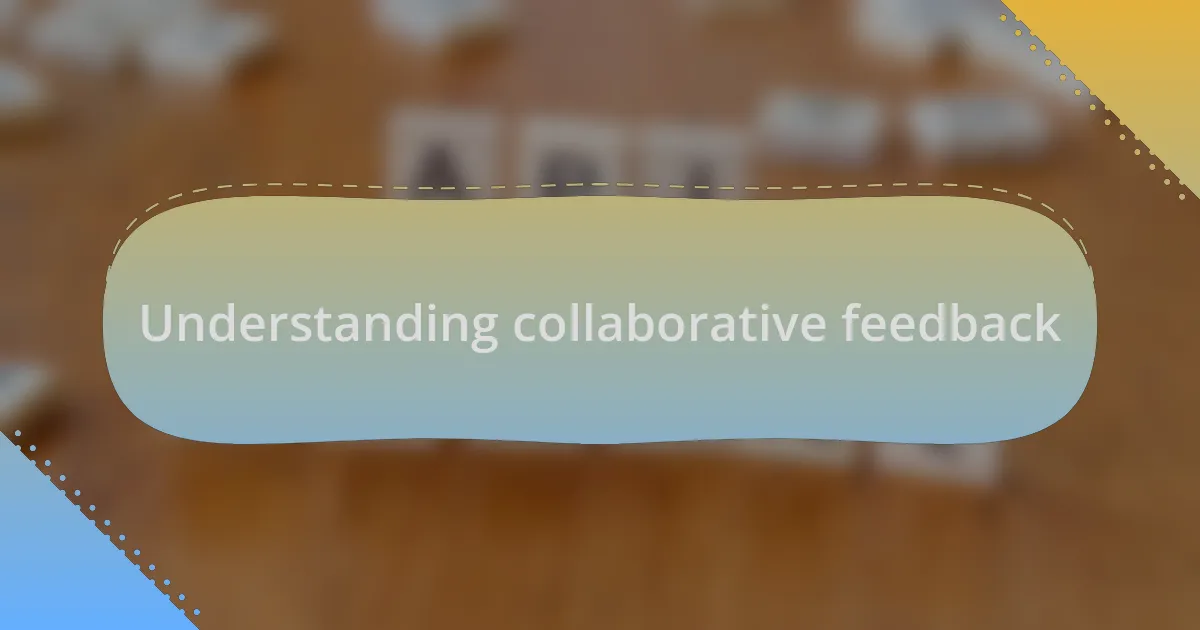
Understanding collaborative feedback
Collaborative feedback is a powerful process where individuals come together to share insights and suggestions on a project or idea, which creates an enriching environment for growth. I remember a time when I was part of a coding group project, and we would gather weekly to review each other’s work. It was amazing to see how collective perspectives transformed my initial drafts into something that exceeded my expectations.
Understanding collaborative feedback also means recognizing the emotional dynamics at play. When you receive feedback from peers, it can stir a mix of anticipation and anxiety. Have you ever felt that moment of vulnerability when someone critiques your work? I certainly have, and in those moments, I learned that constructive criticism, when shared with intent, can lead to significant breakthroughs.
Moreover, the essence of collaborative feedback lies in its capacity to foster innovation. I often ask myself, how can diverse viewpoints lead to more robust solutions? In my experience, whenever my peers brought diverse backgrounds and ideas to the table, the outcomes were often richer and more effective than I could have imagined on my own. Each piece of feedback contributes to a tapestry of knowledge that enhances the final product.
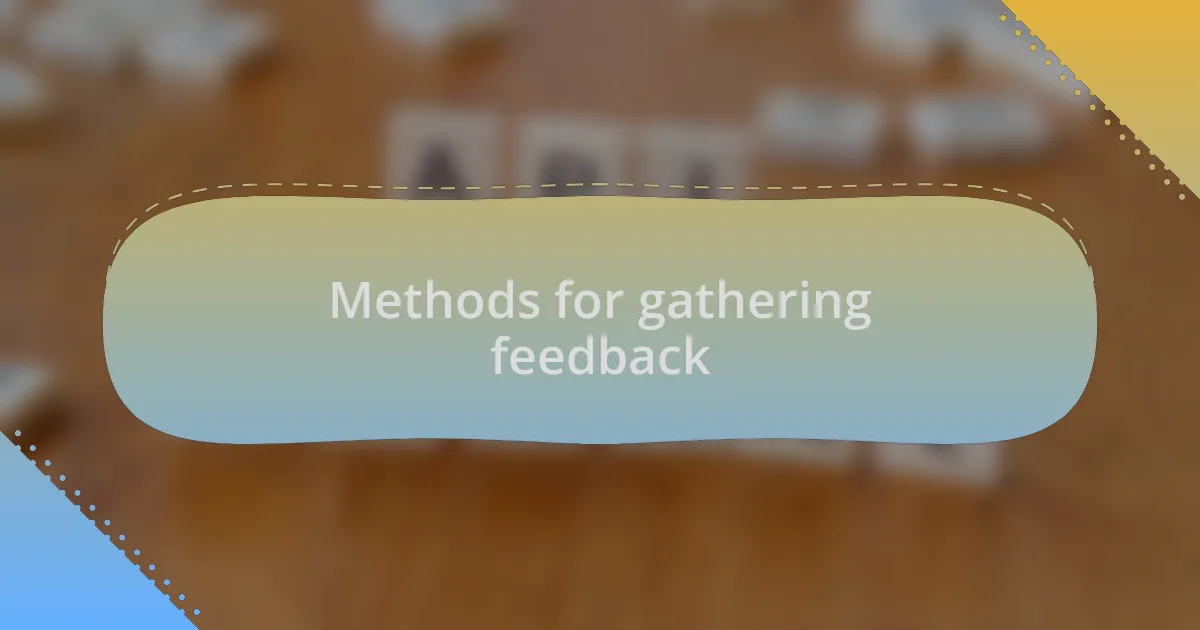
Methods for gathering feedback
Gathering feedback effectively can be achieved through various methods, each catering to different aspects of the collaborative process. For example, I often utilize structured surveys after coding sessions to collect specific feedback on functionality and usability. This allows contributors to voice their opinions anonymously, which can lead to more honest and constructive criticism. Have you ever hesitated to speak up in a group setting? Anonymity often breaks down that barrier.
Another method that has worked well for me is incorporating live feedback sessions using collaboration tools like Zoom or Google Meet. These real-time discussions foster a sense of immediacy and engagement. I recall a time when we quickly resolved an issue during such a session that had been dragging on for weeks. The rush of ideas flowing in the moment made all of us feel more connected to the project’s success. Have you experienced that thrill of collaboration where solutions come together seamlessly?
In addition, I encourage informal channels for feedback, like dedicated chat rooms or forums, to keep the dialogue ongoing. These platforms enable contributors to offer insights as they work, which can be especially useful in programming, where issues often arise unexpectedly. I remember receiving a crucial tip late one night through a chat, which helped me avert a major bug just in time before a deadline. When was the last time a simple conversation led you to an unexpected solution? The power of informal feedback should never be underestimated.

Tools for collaborative feedback
When it comes to tools for collaborative feedback, I find platforms like Trello and Asana incredibly useful. These project management tools allow teams to create boards for specific tasks, where contributors can leave comments and suggestions directly attached to relevant tasks. I remember using Trello during a team project, and seeing all the feedback in one place made it so much easier to prioritize which issues to address first. Have you ever wished for a streamlined way to track all your feedback in one view?
Moreover, incorporating GitHub for code-related feedback has been a game changer for me. The ability to create pull requests and conduct code reviews directly within the platform not only makes the feedback process transparent but also encourages constructive discussions. I once received feedback on a pull request that completely changed my approach to a problem I had wrestled with. There’s something deeply satisfying about collaborating on code that might otherwise go unnoticed in a less structured setting. How often do you think valuable feedback is overlooked in the coding process?
Lastly, I can’t stress enough the value of specialized feedback tools like Userback or Hotjar for gathering user insights. These tools allow users to leave feedback directly on the website interface, which can be pivotal for understanding how real users interact with your product. I vividly recall implementing Hotjar on one of my projects and discovering user pain points that I had never anticipated. Isn’t it fascinating how immediate feedback from actual users can reveal insights that internal teams might miss?
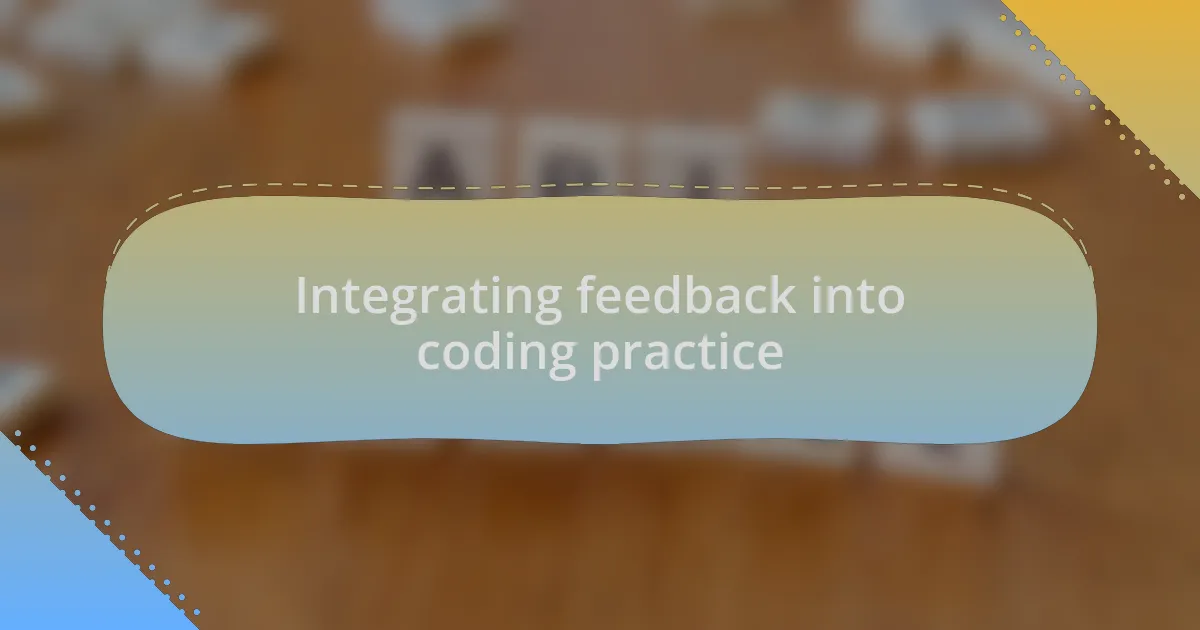
Integrating feedback into coding practice
Integrating feedback into coding practice is essential for growth and improvement. I remember a time when I hesitated to accept feedback on my code, thinking it was a personal critique. However, once I embraced the idea that feedback is a tool for enhancement, I began to see it in a new light. Have you ever noticed how a fresh perspective can illuminate a flaw in your logic that you couldn’t see before?
One of the most effective strategies I’ve used is to incorporate regular code review sessions within my team. During these sessions, I actively encourage my peers to point out not just errors, but also areas where I can improve my coding style. I recall one particular review where a colleague suggested a more efficient method to structure a function. Not only did it make my code cleaner, but it also sparked a wonderful discussion about best practices. So, how often do you collaborate with others to refine your approach?
It’s also crucial to create an environment where feedback feels safe and constructive. I once joined a coding group where everyone emphasized the importance of supportive critiques. The vibe was so encouraging that I felt motivated to share my code without fear of judgment. This shift in mentality not only improved the quality of my work but also deepened my relationships with my teammates. Can you think of a time when constructive feedback made a difference in your own coding journey?
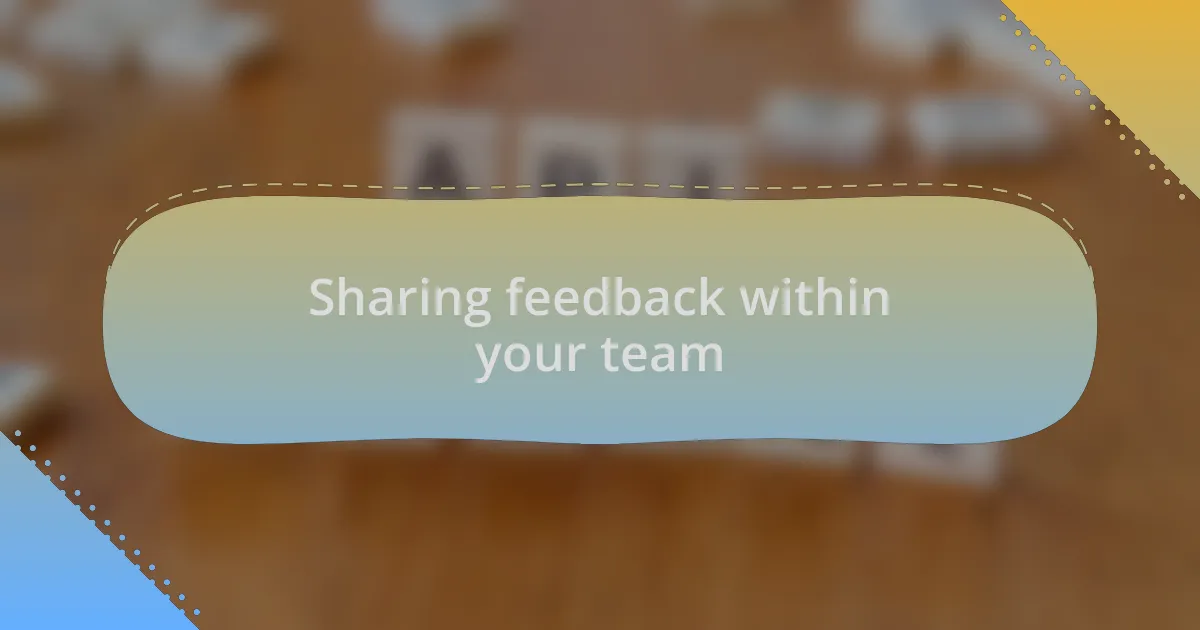
Sharing feedback within your team
Sharing feedback within your team can transform the way you approach projects. I remember a specific incident where I shared a piece of code during a team meeting, and one of my teammates pointed out a potential bottleneck I had overlooked. At that moment, I realized how vital it is to create an open space where everyone feels comfortable sharing their thoughts. Have you ever experienced the shift from doubt to clarity simply because someone else offered their perspective?
It’s often in these moments of open feedback that the best ideas are born. I recall a brainstorming session where we dissected one of my projects. As my colleagues shared their thoughts, I could see the evolution of my original concept into something far better. This collaborative energy fueled enthusiasm within our team, making it easier for us to tackle complex challenges together. Have you ever felt that spark of creativity when others contributed their ideas?
Additionally, fostering a culture of give-and-take feedback is paramount. When I actively encourage my team members to provide honest feedback, I find that it not only enhances individual performance but elevates the entire team’s capabilities. It’s a reciprocal relationship, and I often ask myself: how can I make it easier for my team to openly express their thoughts? By prioritizing open dialogue, we not only build trust but also cultivate a tight-knit community that thrives on collaborative growth.
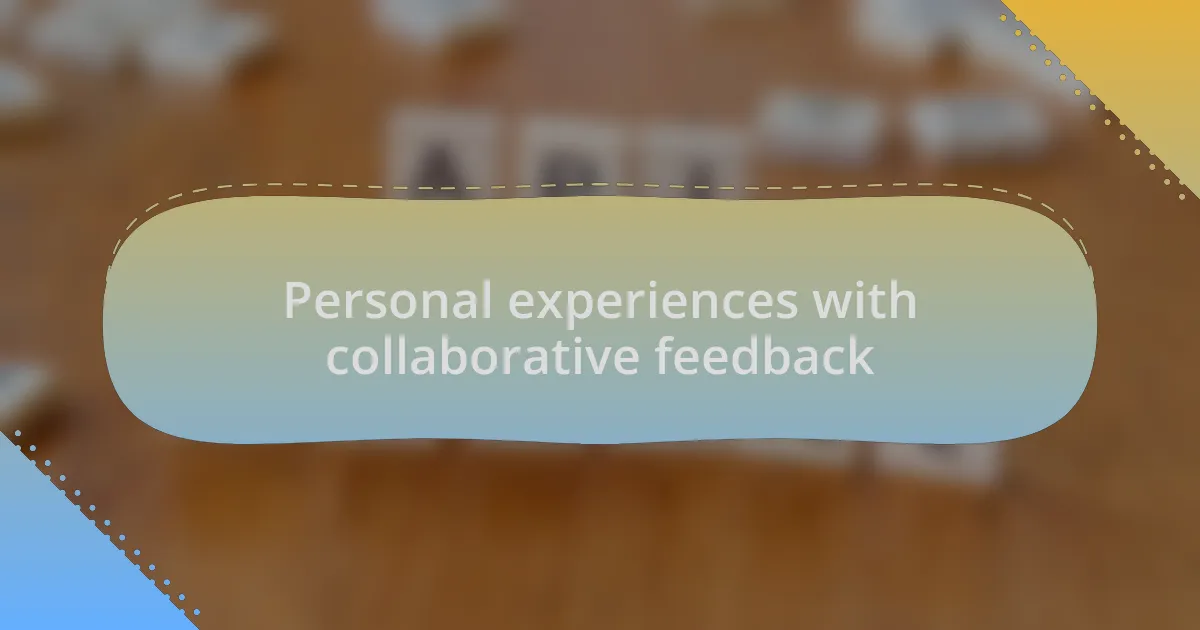
Personal experiences with collaborative feedback
Collaborative feedback is an experience that I cherish deeply. I recall a time when I was mentoring a junior programmer who hesitated to share their thoughts during code reviews. After some encouragement, they pointed out an oversight in my approach—nothing major, but it reminded me how even the newest perspectives can shed light on hidden flaws. It made me wonder, how many great ideas remain unspoken simply because someone fears voicing their opinion?
On another occasion, I participated in a peer review where I received feedback that deeply resonated with my own doubts. The colleague who reviewed my code suggested a different algorithm, which at first seemed daunting to me. But after implementing their suggestion, I found not only did it improve performance, but it also expanded my understanding of the language. This led me to ask myself about my own biases and how they might hinder my progress—how often do we cling to familiarity over experimentation?
Lastly, I’ve learned that leading by example is crucial in collaborative settings. During one project, I openly shared my struggle with a particular task in front of the team. Surprisingly, this vulnerability opened up the floor for others to share their own challenges. It’s extraordinary to realize how removing the façade of perfection can create a genuine desire for feedback. Have you ever noticed how such honesty can pave the way for constructive discussions that elevate everyone involved?